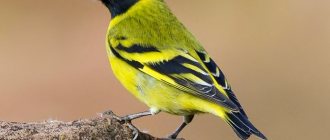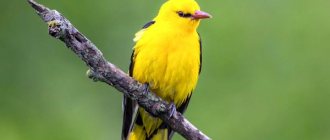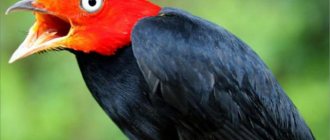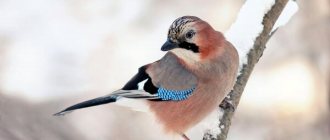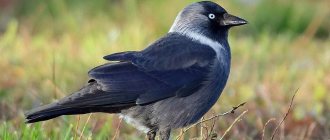Spread the love
In the wild, there are two types of birds: non-migratory birds and migratory birds. The latter make seasonal migrations from one place to another due to environmental or food changes. Also, the reason for flights to warm or cold regions is a characteristic feature of reproduction. Moreover, if one part of the animals prefers areas with high air temperatures, the other remains in cold regions and does not feel any discomfort from this way of life.
All representatives of migratory birds are considered very hardy and mobile creatures that are capable of flying thousands of kilometers, independently finding a course to warm countries, and also returning home without outside help.
Today we will talk about the main types of migratory birds , their external characteristics, life cycle and interesting features.
Famous migratory birds
The class of migratory birds includes only those species that migrate to warm regions with the arrival of winter cold weather. This is explained by the fact that they are warm-blooded, and their average body temperature is 41 degrees Celsius, regardless of external temperature indicators. In this regard, the bird can tolerate cold, but it becomes very difficult to obtain food to restore normal internal temperature on the frozen ground cover, which is why it flies to a more comfortable area. It is for this reason that birds say goodbye to their homeland and fly thousands of kilometers to foreign countries with a satisfactory climate.
Among the most famous species of migratory birds are:
- swallow;
- lapwing;
- song thrush;
- lark;
- robin;
- oriole;
- forest pipit, etc.
In addition to the group discussed above, sedentary ones are also found in our regions. Its representatives remain for the winter in their native lands, and the main reasons for possible migrations are related to the lack of food supply or breeding characteristics.
When do birds make their seasonal migrations?
It is important to pay attention to the fact that birds fly away to warmer regions gradually. First of all, those species that feed on insects and are distinguished by excellent singing abilities leave their native land. After conducting many studies and ornithological expeditions, we were able to determine an interesting pattern:
The migration season opens with birds such as:
- swift;
- martin.
After them, wild waterfowl, including swans, leave their native lands. This is not strange, because with the advent of frost, water bodies are densely covered with an ice curtain, and the natural habitat of such animals is significantly reduced. When September comes, cranes and then rooks prepare for migration.
Geese and ducks close the seasonal migration The latter fly away later than everyone else. In addition, there were cases when this waterfowl did not leave its home and remained to winter in the reservoir. True, this happened very rarely, when in winter the reservoirs remained open and did not freeze. For this reason, people began to say that ducks carry the frosty winter and blizzard on their tails.
Nomadic and migratory birds - what are the differences?
Representatives of the migratory group will leave their home area regardless of environmental circumstances. At the genetic level, they have a self-preservation instinct, which implies a seasonal change of home. Whatever one may say, you can’t disturb nature.
Migratory birds include:
- capercaillie;
- pika;
- woodpecker;
- hazel grouse;
- crossbill;
- jay;
- titmouse, etc.
To avoid migratory individuals, nomads leave their natural place of residence only after independently assessing the situation. Before making a decision, they study weather conditions and food supply. If winter does not foretell severe frosts, siskins, pike-perch and bullfinches do not refuse the opportunity to spend the winter at home. But if birds feel the approach of severe cold weather, they will leave their homeland without hesitation and move to warm countries.
The rapid development of ornithology and science in general has made it possible to identify a lot of amazing facts about bird migrations. Now we know how birds can navigate in the air and form flocks of thousands for such long journeys.
The absolute navigation of the above-mentioned creatures is ensured by the magnetic field of our earth. For example, the starling finds its way from the southern regions to the northern ones only due to its innate understanding of the direction of the north magnetic pole. In addition, he quickly determines his current geolocation and creates a route to return.
When forming a large flock, birds are guided by the dynamics of its light and dark elements. Birds maintain a certain level of density, which allows them to accurately collect the necessary information from their relatives through various gestures and actions.
The most famous migratory bird is the rook
Among the many greatness of migratory birds, the rook is considered very popular. Many people still call it the “harbinger of winter,” because the bird leaves its native area only at the end of autumn (usually at the end of October or mid-November). The bird returns home in the first days of March, depending on the climatic conditions of the region where it lives.
Ornithologists highlight one unique ability of this bird - it can imitate human speech no worse than the famous parrots. An adult bird grows up to 45 centimeters and weighs from 310 to 490 grams. Externally, the rook is not much different from the crow, and the main characteristic features are the pronounced slenderness and surface of the feathers, colored black with a purple tint.
The rook has a thin but very straight beak. With its help, the animal obtains food from the most inaccessible sources, for example, from underground. The bird is unbiased in its choice of food. The diet may include earthworms, rodents, and plant food.
The rook plays a very important role for flora and fauna, since they eat a wide variety of forest pests, including:
- bedbugs;
- caterpillars;
- rodents, etc.
Which birds are the last to fly south in autumn? What birds fly away in autumn?
In the fall, insectivorous bird species, such as the wagtail, fly away first.
While it remains possible to find seeds or fruits, granivores are still in place. But as soon as the snow falls, or rather when the grains are hidden under a layer of snow, siskins, buntings and finches fly away. And many people probably know which birds are the last to fly away in the fall. Waterfowl ducks and geese begin to leave their homes when rivers and ponds begin to be frozen by ice floes. In addition, some bird species, both wintering and migratory, leave their habitats depending on weather conditions. In cases where the year turned out to be fruitful, and there was little snow, bullfinch, redpoll, waxwing, and butternut may remain for the winter. But if the feeding situation is unfavorable, they begin to join the birds that are about to fly south.
Birds are also divided into migratory and wintering, depending on the area of residence of these individuals. For example, in the northern regions, even crows and rooks begin to fly away towards the south, while their southern counterparts remain in place during this period. Blackbirds from Central Russia fly away for the winter, but in Western Europe they do not leave their habitats.
Martin
Another very famous migratory bird is the swallow. In the absence of facts and scientific evidence, probably no one would have believed that such a fragile and tiny bird could fly thousands of kilometers from its home. But the bird actually makes seasonal migrations twice a year. True, during such a procedure, many individuals from the flock die and do not reach the indicated place. Cases of mass extinction of an entire flock due to weather changes cannot be ruled out.
The external features of the swallow look impeccable. The bird has elongated wings and a clear cut tail. She practically does not walk on the ground and spends a significant part of her life in flight. It is important to note that even sleep and mating occur in the air.
There are about 120 species of swallow in the wild. Due to their unpretentiousness to living conditions, swallows can live almost anywhere. Today they are absent only in Antarctica and Australia. Birds use only insects as food , which they take out from under the ground or look for in the bark of trees.
The oriole is not only a songbird, but an intelligent and beautiful one!
“Forest flute” or “forest cat” are all orioles. This bird is one of the most beautiful in the world. In addition, she is the best singer of Russian forests! Her trills resemble playing a flute. It is almost impossible to see this bird, since it is always hidden in dense foliage. By the way, in June the oriole begins to emit wild screams, like a cat whose tail has been stepped on. This is her battle cry, serving as a warning of danger.
Goodbye Russia!
The oriole is a migratory bird. However, from the south it returns to Russia later than the others - in May, when the trees are already green, making noise with their foliage. And the oriole flies to warmer climes earlier than all other species of migratory birds!
Feed
The oriole is a useful bird! It eats a huge variety of harmful insects, benefiting plants and humans. The bird catches its prey in flight, and also collects it on the ground and in trees. Sometimes she is not averse to eating spiders or small snails. Interestingly, orioles and cuckoos are the only birds that destroy a special type of harmful caterpillars that other birds cannot stand! At the end of summer, our feathered beauty becomes a “herbivore”: she eats small tree fruits, such as cherries, as well as pears and berries...
Habitat
Today, this bird inhabits all of Europe up to the very south of England and Sweden. It is also widespread in the forests of Southwestern Siberia. In general, the oriole is a bird (photo No. 2) very common almost all over the world! Just think: northwest Africa and Asia Minor, as well as southwest Siberia and all of Europe! By the way, its tropical origin can be explained simply: it’s a migratory bird! Moreover, she does not stay long in our area. Already in August they disappear from their nesting places, flying away from cold Russia to distant tropical Africa! That's what she is - an oriole!
The bird, whose singing cannot but delight our ears, loves to settle in old parks, gardens and alleys, as well as in thickets with rather tall trees along the banks of streams. It can often be found in deciduous forests and light forests. The oriole tries to avoid coniferous and dense dark forests.
Nesting
As mentioned above, in nature it is very difficult to notice this wonderful bird. The oriole is a timid and cautious bird. Therefore, it sticks to dense foliage and only on very tall trees! That's where she nests. Her nest looks like the most ordinary basket of grass stems, leaves, birch bark and other natural “building materials”. There are no more careful builders among birds of her height than herself! Usually the female lays a clutch of 3-5 eggs. Both parents participate in incubation. A month - and the chicks fly out of the nest! By the way, this beauty’s nest, skillfully suspended in a green grove, is very difficult for the average person to find!
“Hobby”
Some species of these birds are real neaties! For example, the common oriole simply cannot live without constant bathing! This is her kind of “hobby”. Ornithologists are moved by watching the bright yellow chick, which, like a lonely swallow, falls vertically and rapidly from a height onto the surface of the water. This is a real happiness for all wildlife lovers!
Nightingale
Even a child knows about this amazing creature. He is popularly known for his magnificent singing abilities and amazing appearance.
For many years , ornithologists did not know why the nightingale makes such beautiful sounds and sings most of its life. As a result of long research, it was possible to determine that when singing, the bird does not pay attention to the dangers that surround it. She humbly lowers her wings and continues to receive incredible pleasure from her favorite activity. It would be great if people treated art the same way.
With the arrival of winter cold weather, the nightingale moves to North Africa, but returns home in mid-April. Already during this period one can hear the first delightful songs of this tiny creature. As soon as insects are born, the bird’s life takes on new vigor.
Post Views: 301
Notes of an Astrakhan naturalist. The oriole flies away first
Column author: Vladimir Pankov
August has just begun, summer is still in full swing, but as the poet said, “the sky was already breathing autumn” - and migratory birds will soon begin to fly away. One of the first to leave the Astrakhan region are orioles, very bright and beautiful birds - but at the same time, the most cautious and inaccessible. Orioles prefer to stay in the canopy of tall trees and seem to be more difficult to photograph than any other bird.
The common oriole is the only representative of its family in the temperate latitudes of the European part of Russia. She arrives to us quite late, at the beginning of May, and her mating song, a beautiful melodic whistle, similar to the sound of a flute, is considered by many to be the beginning of summer. An oriole can also scream sharply and abruptly, like a frightened cat.
The oriole feeds on various caterpillars, which it finds in the crowns of trees, and also builds nests at heights - these birds do not need to go down. By August, her chicks are already able to fly independently and are preparing for an early flight to the south. The oriole winters quite far away, in the tropics of Asia and Africa, so it is not surprising that it arrives so late and flies away so early.
Male orioles, like many other birds, are more colorful and beautiful because they do not have to incubate the eggs in the nest. Their plumage is mostly yellow, with black stripes. Females are more discreet, their greenish feathers blend well with the foliage. Seeing an oriole is much more difficult than hearing it.
At the same time, the oriole is a fairly common bird in most of Europe. It does not form close nesting colonies - but in ribbon forests along river channels in the Lower Volga you can hear its song quite often.
Fortunately for this bright and beautiful bird, its migration routes do not affect the territory of China. Otherwise, she could repeat the fate of another bird of bright yellow color - the Dubrovnik. The once very common species spends the winter in China - and is killed there by the millions. They say that according to the Chinese, eating a yellow bird has a special sacred meaning. Because of this, Dubrovnik was on the verge of extinction. Once upon a time it was often found in the Astrakhan region, but in recent years it has become very rare.
Oriole has not yet been included in the list of the most expensive ingredients of the so-called “traditional oriental medicine”, like Dubrovnik - or the horns of saigas, because of which these species were on the verge of complete extinction. And next summer will begin again with the beautiful melody of an oriole hidden in the crown of trees.
